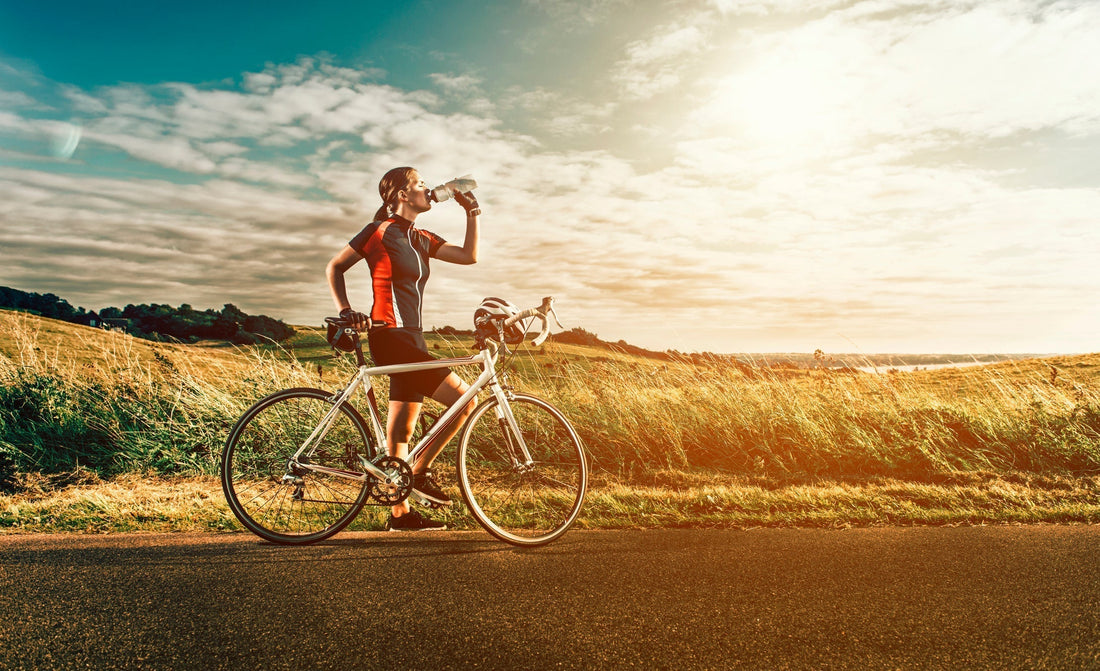
Energy Sources We Use During Activity
Share
In today's article, we will talk about the energy sources our body uses while doing endurance sports activities such as running, triathlon and cycling.
Fats
Fats in our body are the most efficient energy sources. They provide approximately 9 kcal of energy per gram. Since they are found in abundance even in the weakest person, they can be described as an unlimited source of energy.
During activity, most of the energy required in our low-effort activities (for example, those we do in zones 1 and 2) is provided by fats. That's why such activities are recommended to lose weight. At the same time, long endurance activities are also performed in these regions so that energy is provided from fat and limited glycogen stores are not used. Fats are broken down only by aerobic respiration.
Carbohydrates
It is an energy source that is burned faster than fat but is less efficient. 4 kcal of energy is obtained from 1 gram of carbohydrate. It is our body's number one choice as it is a quick source of energy during our high-effort exercises. We get most of our energy from carbohydrates in our short and medium distance activities.
Carbohydrates are stored in our body in the form of glycogen in muscle cells and liver. When they are used, they are broken down into glucose and burned in this form, or they mix with the blood and are sent to other cells that need energy.
Our body's glycogen storage capacity is quite limited. While it is thought that a normal person can store approximately 500gr (2000 kcal) of glycogen, the glycogen storage capacity of an athlete who exercises regularly is even higher. It is possible to increase this capacity with regular exercise and a carbohydrate-based diet.
Carbohydrates are broken down by respiration with oxygen (aerobic) or without oxygen (anaerobic). When we increase the effort level, our muscle cells, which normally perform aerobic respiration, begin to use anaerobic respiration in cases where oxygen is not sufficient. While 38 ATPs are produced in aerobic respiration, only 2 ATPs are produced in anaerobic respiration. In this regard, respiration without oxygen is very inefficient.
In anaerobic respiration, unlike aerobic respiration, lactic acid is released. In order to get out of the cell wall, lactic acid turns into lactate by giving hydrogen ions into the cell and mixes with our circulatory system. Afterwards, this lactate can be used as an energy source by our brain and muscles.
In activities that last longer than two hours and require high effort, these limited glycogen stores may approach depletion. Since glycogen is also used by the brain, when the amount of glycogen in our body decreases, our brain tries to stop us by producing symptoms such as dizziness, blackout, and nausea. This situation is referred to as 'hitting the wall' or 'bonking' in the literature. To prevent this situation, athletes generally fill their glycogen stores by eating a carbohydrate-rich diet before the activity, and constantly supplement their carbohydrates with energy gels and energy bars during the activity.
The amount of carbohydrates that a normal person can digest in an hour is considered to be 60g. However, athletes who exercise regularly can adapt to this issue and digest 90-120 grams per hour. This allows them to withstand high effort for long periods of time without depleting their glycogen stores. For example, world marathon record holder Eluid Kipchoge's nutrition plan during the race consists of 100g of carbohydrates per hour.
The reason why energy gels and carbohydrate powders mixed with water are indispensable for carbohydrate consumption during activity is that they are easily digested and do not burden our body too much. A carbohydrate source that is more difficult to digest will be more of a burden on our intestines, which will cause our performance to decrease, gastrointestinal problems, or disruption of our nutrition plan by not being able to get the amount we want in the time we want.
Enduranlar.com offers pre-workout products such as Onthego Preworkout Wildberry, Ingobio Speed Hot Shot Grapefruit, Wup Carb3+ Apple, Wup Podium Energy Gel Mint Caffeine, Onthego Progel Blackberry, Ingobio Powergel Mojito, Wup Electrolyte Boost Salt Tablet, You can examine our products in this class by clicking on their categories during the activity, such as Ingobio Electrolyte Cherry, Olimp Fire Start Energy Gel.
Proteins
Another energy source that our body uses least, but increases its destruction when other fuels decrease, especially during long endurance activities, is proteins. Like carbohydrates, proteins provide 4 kcal of energy per gram. They are burned by aerobic respiration.
Protein degradation always occurs in low amounts, but excessive amounts are not desired. An indication that we get our energy from proteins during a workout is the smell of ammonia emitted from our sweat. In such a case, we need to increase our daily carbohydrate and fat intake, and if the situation continues, we need to see a doctor.
Summary
In short, we get our energy mostly from fats and carbohydrates during activity. Which resource we use and how much depends on our effort level.
